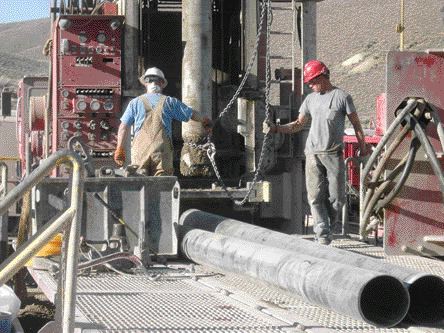Vancouver — Coral Gold Resources (CLH-V, CLHRF-O) has more than doubled inferred resources at its Robertson property in north- central Nevada’s Crescent Valley.
Inferred resources now stand at 82.8 million inferred tonnes grading 0.87 gram gold per tonne for about 2.3 million contained ounces gold hosted in 10 zones. The estimate uses a 0.47-gram gold cutoff grade and is based on US$600 per oz. gold and an assumed 70% recovery.
The database used in the resource comprises 1,160 drill holes totalling over 162,000 metres.
The resource covers six distinct, separate areas (Distal, 39A, Gold Pan, Porphyry, Altenburg Hill and Southern Area). Additionally, some of the resource blocks are broken out as oxide and sulphide-mineralized.
Robertson is located in the Battle Mountain-Cortez gold trend, just north of the large Pipeline gold mine owned by Barrick Gold (ABX-T, ABX-N) and Rio Tinto (RTP-N, RIO-L) subsidiary Kennecott.
The property covers a series of vertically stacked thrust sheets, forming part of the Roberts Mountain complex, and mostly consists of siliciclastic rocks, with some volcanics. Granodiorites (the Tenabo stock) intrude the complex, providing the heat engine that drove the main mineralizing event. A system of low and high-angle faults and fracture zones form the dominant control on mineralization within layered sequences of retrograde-altered biotite and calc-silicate hornfels and skarn-type rocks.
Last year, Coral Gold was the target of a takeover offer by U.S. Gold (UXG-T, UXG-X), which was seeking to consolidate a large land position within the Crescent Valley. Although U.S. Gold successfully acquired Nevada Pacific Gold and Tone Resources, it dropped its offer for Coral, citing onerous issues relating to U.S. Securities and Exchange Commission requirements regarding past account- ing items (non-capital loss carry-forwards).
Following the resource boost, Coral shares climbed 10%, closing up a nickel at 55 apiece.


Be the first to comment on "Coral Gold sees Robertson ounces grow (January 21, 2008)"